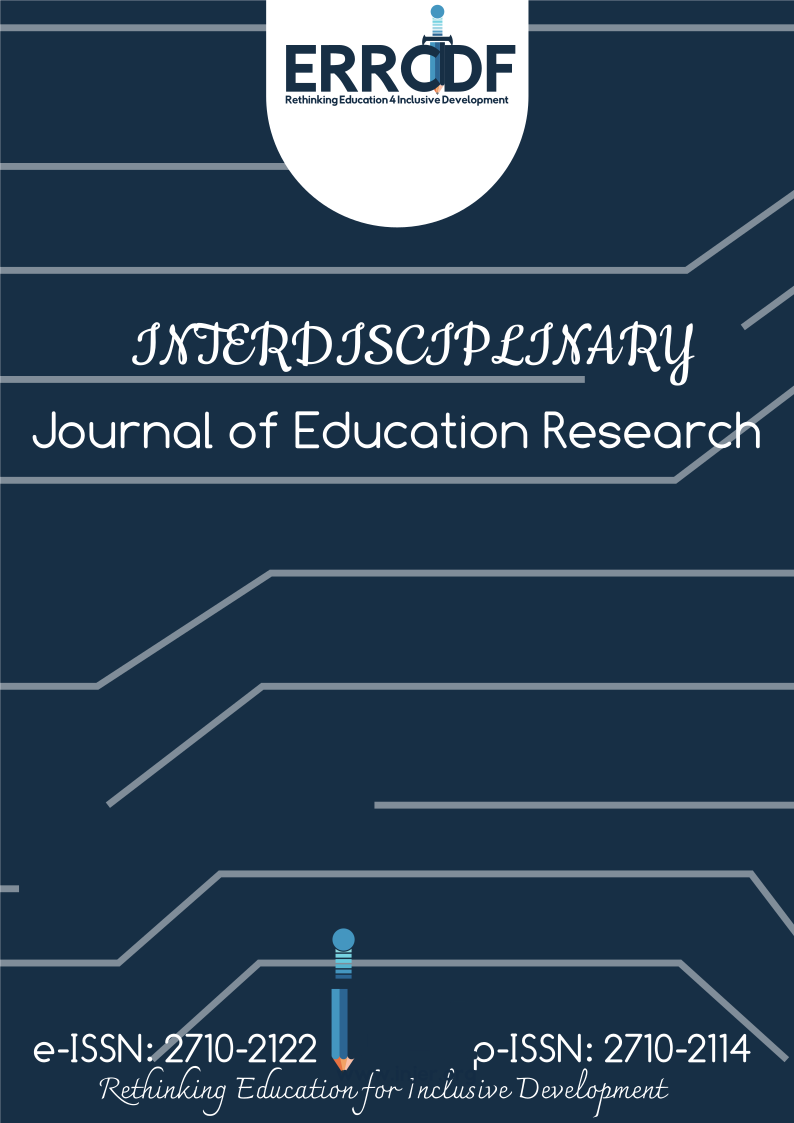Psycho-social effects of cyberbullying in selected secondary schools, KwaZulu-Natal, South Africa
DOI:
https://doi.org/10.38140/ijer-2025.vol7.s1.12Keywords:
Bullying, cyberbullying, cyber victimisation, psycho-social effects, collaborative partnershipAbstract
The psychological and social effects of cyberbullying on secondary school students are deep and far-reaching. Effectively addressing this issue requires a holistic approach involving the active participation of researchers alongside educators. Therefore, this study aimed to explore the psychological and social influence of cyberbullying on secondary school learners in selected KwaZulu-Natal secondary schools, South Africa. The Coping with Cyber Bullying Questionnaire (CWCBQ) was adopted from Sticca's works. While the p-value was used to establish the psychological and social influence of cyberbullying among secondary school learners, the independent t-test (?=?0.05) was used to compare differences in opinions among learners regarding the psychosocial effects of cyberbullying on victims in secondary schools. The study revealed that there were no statistical differences in cyberbullying behaviour and psychosocial effects on victims in secondary schools. Very few learners affirmed that cyberbullying could cause social and psychological harm to the lives of those who are bullied online. The study recommended the collaboration of various stakeholders, including learners, parents, teachers, school administrators, psychologists, social workers, and law enforcement agencies, to participate in the reduction, prevention, and management of cyberbullying in schools.
References
Baldry, A. C., Farrington, D. P., & Sorrentino, A. (2016). Cyberbullying in youth: A pattern of disruptive behaviour. Psicología Educativa, 22(1), 19-26. https://doi.org/10.1016/j.pse.2016.02.001
Bayazit, U., Simsek, S., & Ayhan, B. A. (2017). An examination of the predictive factors of cyberbullying in adolescents. Social Behaviour and Personality: An International Journal, 45(9), 1511-1522.
Beran, T., & Li, Q. (2005). Cyber-harassment: A study of new methods for an old behaviour. Journal of Educational Computing Research, 32(3), 265-277. https://doi.org/10.2190/8YQM-B04H-PG4D-BLLH
Biggs, B. K., Vernberg, E. M., Twemlow, S. W., Fonagy, P., & Dill, E. J. (2008). Teacher adherence and its relations to teacher attitudes and student outcomes in an elementary school-based violence prevention program. School Psychology Review, 37(4), 533–549.
Campbell, M. A., Whiteford, C., Duncanson, K., Spears, B., Butler, D., & Slee, P. T. (2020). Cyberbullying bystanders: Gender, grade, and actions among primary and secondary school students in Australia. International Journal of Technoethics, 8(1), 44–55.
Chukwuere, J. E., Chukwuere, P. C., & Adom, P. D. (2021). The psychosocial effects of social media cyberbullying on students in selected African countries. Acta Informatica Malaysia (AIM), 5(2), 62-70. https://doi.org/10.26480/aim.02.2021.62.70
Chukwuere, P. C., Chukwuere, J. E., & Adom, D. (2021). The psychosocial effects of social media cyberbullying on students in selected African countries. Acta Informatica Malaysia, 5(2), 62-70.
Cilliers, L., & Chinyamurindib, W. (2021). Perceptions of cyberbullying at primary and secondary school level amongst student teachers in the Eastern Cape province of South Africa. South African Computer Journal, 32(1). https://journals.co.za/toc/comp/32/1
CRIN. (2001). Media Awareness Network. https://archive.crin.org/en/library/organisations/media-awareness-network.html
Dennehya, R., Meaney, S., Cronin, M., & Arensman, E. (2020). The psychosocial impacts of cybervictimisation and barriers to seeking social support: Young people’s perspectives. Children and Youth Services Review, 111, 104872. https://doi.org/10.1016/j.childyouth.2020.104872
Diamanduros, T., Downs, E., & Jenkins, S. J. (2008). The role of school psychologists in the assessment, prevention, and intervention of cyberbullying. Psychology in the Schools, 45(8), 693–704. https://doi.org/10.1002/pits.20335
Dredge, R., Gleeson, F. M., & Garcia, X. P. (2014). Risk factors associated with the impact of severity of cyberbullying victimisation: A qualitative study of adolescent online social networking. Cyberpsychology, Behaviour, and Social Networking, 17(5), 287–291.
Estevez, E., Estevez, I., Sagura, A., & Sharaz, M. (2019). The influence of bullying and cyberbullying on the psychological adjustment of victims and aggressors in adolescence. International Journal of Environmental Research and Public Health, 16(12), 2080. https://doi.org/10.3390/ijerph16122080
Farhanpour, P., Mutshaeni, H. N., & Maluleke, C. (2019). Emotional and academic effects of cyberbullying on students in a rural high school in the Limpopo province, South Africa. South African Journal of Information Management, 21(1), 1-8.
Gale. (2016). Differences between cyberbullying and traditional bullying: Gale Student Resources in Context. GALE.
Hinduja, S., & Patchin, J. W. (2007). Offline consequences of online victimization. Journal of School Violence, 3(2), 89–112. https://doi.org/10.1300/J202v03n02_07
Holfeld, B., Stoesz, B., & Montgomery, J. (2019). Traditional and cyberbullying and victimization among youth with autism spectrum disorder: An investigation of the frequency, characteristics, and psychosocial correlates. Journal on Developmental Disabilities, 24(2), 61–76.
Kallestad, J. H., & Olweus, D. (2003). Predicting teachers' and schools' implementation of the Olweus Bullying Prevention Program: A multilevel study. Prevention & Treatment, 6(1), 21. https://doi.org/10.1037/1522-3736.6.1.621a
Kim, S. W., Shin, I. S., Dewey, M., & Yoon, J. S. (2013). Differences in predictors of traditional and cyber-bullying: A 2-year longitudinal study in Korean school children. European Child & Adolescent Psychiatry, 22(5), 309–318.
K?rcaburun, K., Kokkinos, C. M., Demetrovics, Z., Király, O., & Griffiths, M. D. (2019). Problematic online behaviours among adolescents and emerging adults: Associations between cyberbullying perpetration, problematic social media use, and psychosocial factors. International Journal of Mental Health Addiction, 17, 891–908. https://doi.org/10.1007/s11469-018-9894-8
Kyriacou, C., & Zuin, A. (2018). Cyberbullying bystanders and moral engagement: Psychosocial analysis for pastoral care. Pastoral Care in Education, 36(2), 99–111. https://doi.org/10.1080/02643944.2018.1453857
Litwiller, B. J., & Brausch, A. M. (2013). Cyberbullying and physical bullying in adolescent suicide: The role of violent behaviour and substance use. Journal of Youth and Adolescence, 42, 675-684. https://doi.org/10.1007/s10964-013-9920-4
McDermott, M. (2012). The relationship between cyberbullying and depression in adolescents [Master's thesis, Eastern Illinois University].
Mkhize, S., & Gopal, N. (2021). Life science global cyberbullying perpetration: Children and youth at risk of victimisation during the COVID-19 lockdown. International Journal of Criminology and Sociology, 10, 525–537. https://doi.org/10.6000/1929-4409.2021.10.60
Mong, E. (2020). Cyberbullying and its effects on the mental well-being of adolescents (Doctoral dissertation, North-West University, South Africa).
Motswi, E., & Moshegoane, S. (2017). The role of sex in the prevalence rates and psychological consequences of cyberbullying among learners in the Limpopo Province, South Africa. Gender and Behaviour, 15(3), 9808–9817. https://doi.org/10.10520/EJC-c431d7c7b
New Media Studies. (2022). Effects of lifestyle influenced by cyberspace on original research academic engagement of high school students. Hasan Momeni, Master of Social Sciences, Faculty of Social Sciences, University of Tehran, Tehran, Iran; Marjan Albehbahani. New Media Studies, 8(31), Fall 2022. http://nms.atu.ac.ir https://doi.org/10.22054/nms.2022.47482.846
Nkwanyana, B. P., & Nzima, D. R. (2022). Influence of secondary school learners’ characteristics on perceived cyberbullying behaviour. Gender and Behaviour, 20(2), 19433-19442. https://doi.org/10.10520/ejc-genbeh_v20_n2_a16
O'Dea, B., & Campbell, A. (2012). Online social networking and the experience of cyber-bullying. Annual Review of Cyber Therapy and Telemedicine. IOS Press.
Paruk, M. E., & Nassen, R. (2022). Cyberbullying perpetration and victimisation amongst adolescent psychiatric patients at Lentegeur Hospital, South Africa. South African Journal of Psychiatry, 28(0), a1755. https://doi.org/10.4102/sajpsychiatry.v28i0.1755
Perry, M. B. (2015). Emotional and social effects of cyberbullying on adolescents. Paper presented to the Gordon Albright School of Education, in partial fulfilment of the requirements for the degree of Master of Education, EEA 650 Project, August 2015.
Piccoli, V., Carnaghi, A., Grassi, M., Straga, M., & Bianchi, M. (2020). Cyberbullying through the lens of social influence: Predicting cyberbullying perpetration from perceived peer norms, cyberspace regulations, and ingroup processes. Computers in Human Behaviour, 102, 260-273. https://doi.org/10.1016/j.chb.2019.08.002
Pillay, C. L. (2012). Behavioural and psychosocial factors associated with cyberbullying [Doctoral dissertation, University of Zululand].
Popovac, M., & Leoschut, L. (2012). Cyberbullying in South Africa: Impact and responses. Centre for Justice and Crime Prevention, 13(6), 1-16.
Popovic, M., & Leoschut, L. (2012). Cyberbullying in South Africa: Impact and responses. Centre for Justice and Crime Prevention, Issue Paper No. 13. June 2012.
Rachoene, M., & Oyedemi, T. (2015). From self-expression to social aggression: Cyberbullying culture among South African youth on Facebook. Communication, 41(3), 302-319. https://doi.org/10.1080/02500167.2015.1045171
Ranjith, P. J., Vranda, M. N., & Kishore, M. T. (2023). Predictors, prevalence, and patterns of cyberbullying among school-going children and adolescents. Indian Journal of Psychiatry, 65(7), 720–728. https://doi.org/10.4103/indianjpsychiatry.indianjpsychiatry_313_23
Sabella, R. A., Patchin, J. W., & Hinduja, S. (2013). Cyberbullying myths and realities. Computers in Human Behaviour, 29(6), 2703–2711. https://doi.org/10.1016/j.chb.2013.05.002
Schenk, A. M., & Fremouw, W. (2012). Prevalence, psychological impact, and coping of cyberbully victims among college students. Journal of School Violence, 11(1), 21-37. https://doi.org/10.1080/15388220.2011.630310
Sharif, S. (2008). Cyberbullying: Issues and solutions for the school, the classroom, and the home. London: Routledge.
Smit, D. M. (2015). Cyberbullying in South African and American schools: A legal comparative study. South African Journal of Education, 35(2), 1–11. https://doi.org/10.15700/saje.v35n2a1020
Smith, P. K. (2014). Understanding school bullying: Its nature and prevention strategies. Sage Publications.
Sticca, F., Machmutow, K., Stauber, A., Perren, S., Palladino, B. E., Nocentini, A., Menesini, E., Corcoran, L., & McGuckin, C. (2015). The Coping with Cyberbullying Questionnaire: Development of a new measure. Societies, 5(2), 515–536. https://doi.org/10.3390/soc5020515
Tippett, N., & Wolke, D. (2014). Socioeconomic status and bullying: A meta-analysis. American Journal of Public Health, 104(6). https://doi.org/10.2105/AJPH.2013.301576
Tustin, D. H., Zulu, G. N., & Basson, A. (2014). Bullying among secondary school learners in South Africa with specific emphasis on cyberbullying. South African Professional Society on the Abuse of Children. https://doi.org/10.1016/j.childabuse.2014.06.021
Yang, S. J., Stewart, R., Kim, J. M.,
Yockey, R. D. (2018). SPSS demystified: A simple guide and reference (3rd ed.). New York: Routledge.
Young, K., & Govender, C. (2018). A comparison of gender, age, grade, and experiences of authoritarian parenting amongst traditional and cyberbullying perpetrators. South African Journal of Education, 38(1), s1-s11.
Downloads
Published
How to Cite
Issue
Section
License
Copyright (c) 2025 Bhekuyise Prince Nkwanyana

This work is licensed under a Creative Commons Attribution 4.0 International License.










